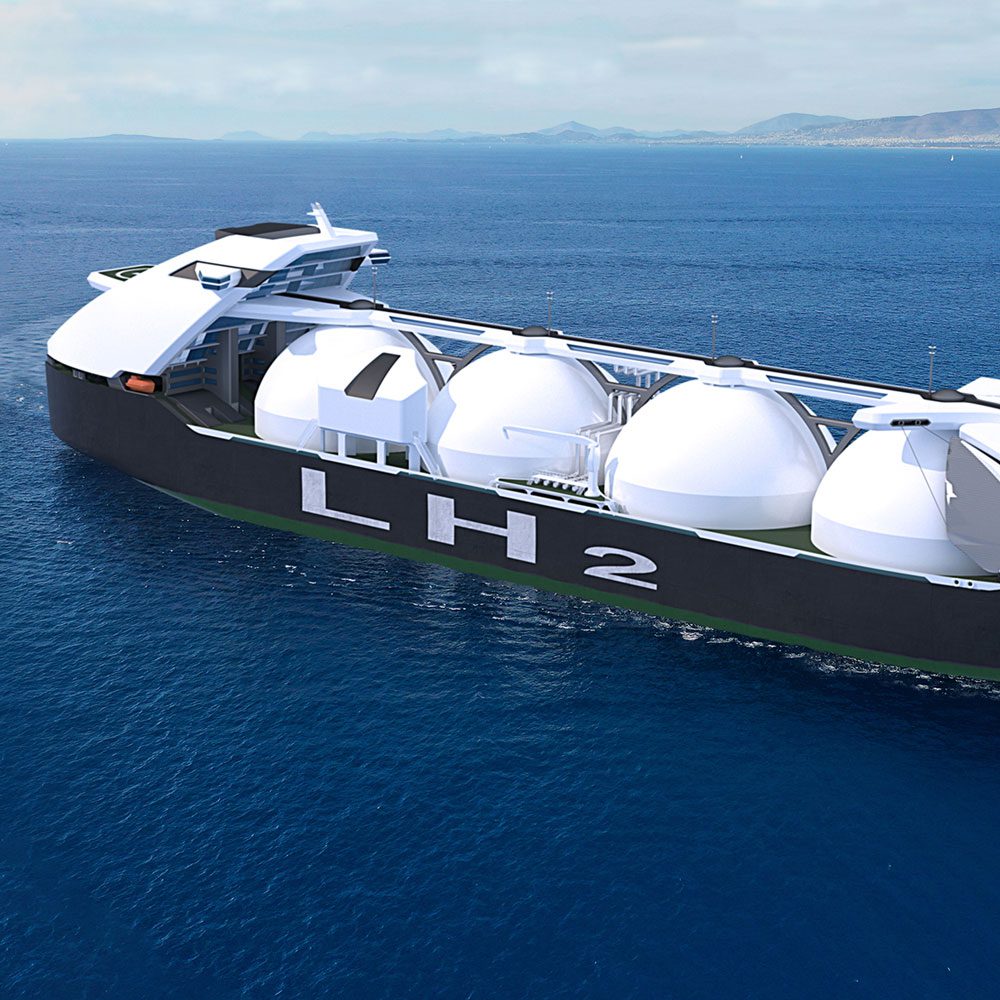About the Project
The commercial demonstration project will be delivered by two consortia.
The initial production by 2030 will be 40,000 tonnes per annum (tpa) by JPSC JV. 10,000 tpa will be made available for domestic use, whilst JSE export the remainder to Japan where it will be used to generate power for homes and industry and also be used to fuel vehicles.
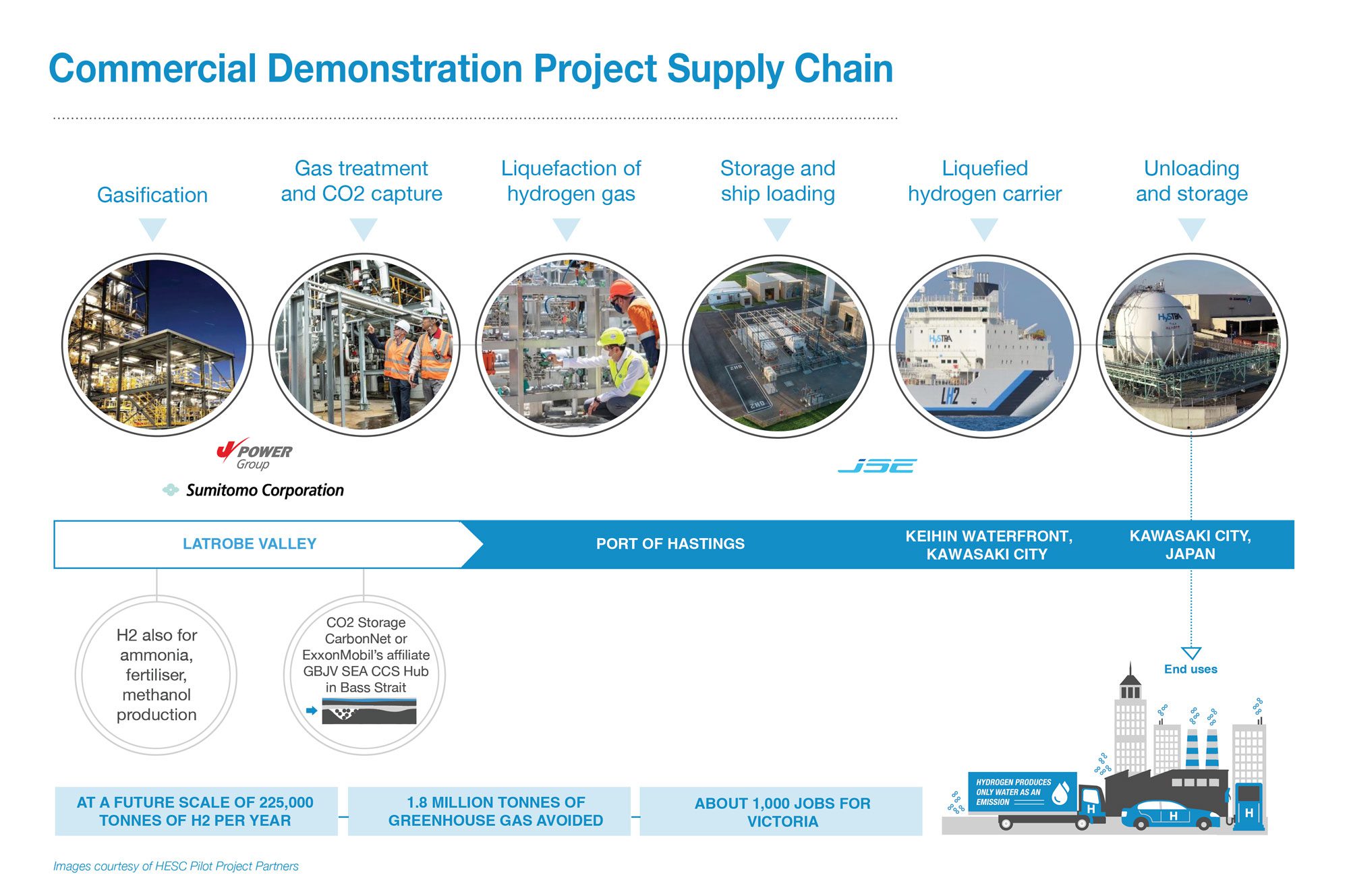
Watch the Video
Clean Hydrogen and Carbon Intensity
The colours of hydrogen (e.g. green, blue) has been a useful high level descriptor, however hydrogen customers require a carbon intensity (kgeCO2/kgH2). This information enables them to calculate their own emission reductions.
The hydrogen produced by the JPSC JV will comply with the Guarantee of Origin Scheme being developed by Australia’s Clean Energy Regulator in-line with global hydrogen markets. The scheme will provide transparency and credibility to customers that production of hydrogen meets their definition of clean hydrogen, and their own CO2 emission reduction requirements.

Hydrogen Production and Carbon Capture
Loy Yang, Latrobe Valley
A commercial hydrogen production plant will be constructed in the Latrobe Valley. Here clean hydrogen will be extracted from Latrobe Valley coal through gasification, supported by carbon capture. It is planned to adopt technology successfully used since 2017 at our similar scaled Osaki CoolGen facility in Japan.
The clean hydrogen will be used in Victoria and a portion exported to Japan. The pure CO2 stream captured through the process can be utilised in a wide variety of industrial processes, including the production of methanol, fertiliser/urea and aviation fuel.
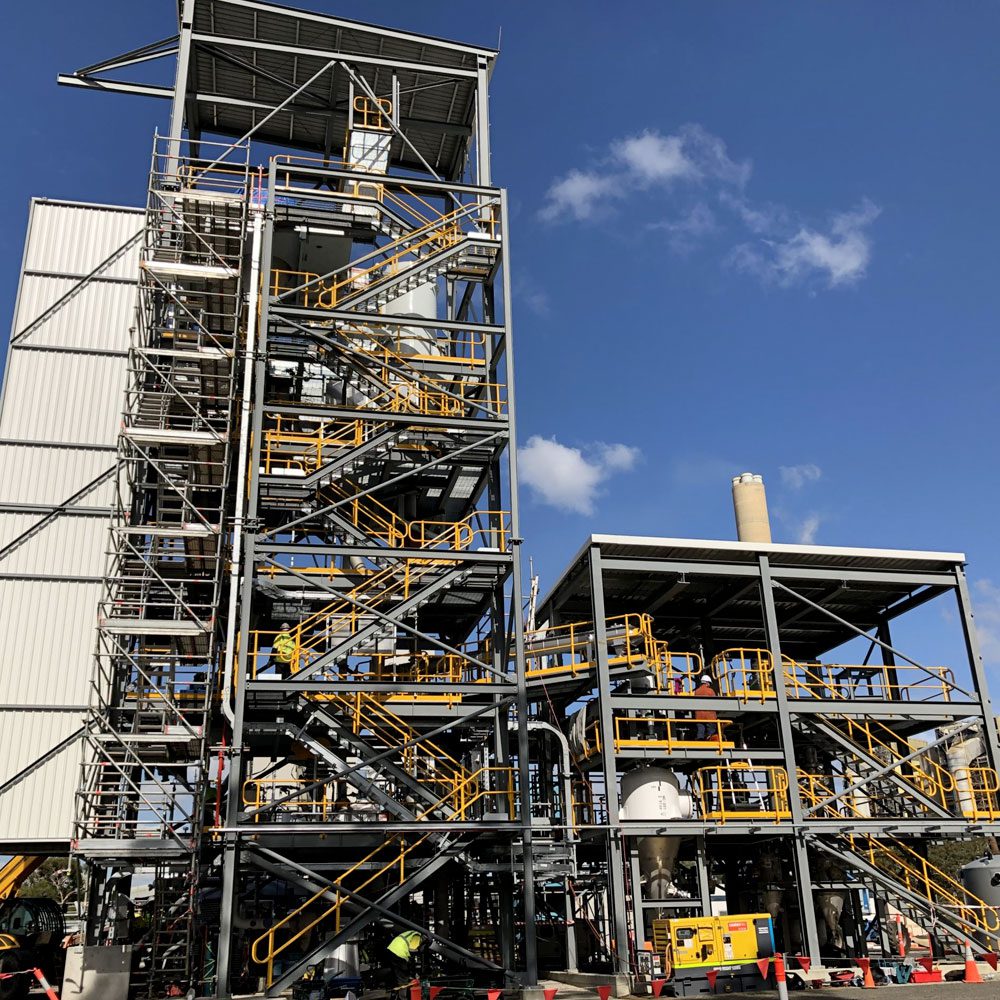
Carbon Capture and Storage
A critical part of the project will be the implementation of a carbon capture and storage process to sequester CO2 emissions.
Producing hydrogen using non-renewable sources with CCS, as assessed by the International Energy Agency and US Department of Energy, is currently the most economical way to produce clean hydrogen at scale.
Carbon capture and storage (CCS) is a tried and tested process where carbon dioxide (CO2) is captured and then stored securely in rock formations deep underground—these formations safely stored oil and gas for millions of years.
According to the Global Carbon Capture and Storage Institute there has been over 30 CCS projects built over the past 45 years and more than 200 projects in various stages of development.
The geology deep below the seabed in the Gippsland Basin in Bass Strait is well suited to CO2 storage within the existing rock formations. These geological formations have stored oil and gas securely for millions of years.
There are two world class carbon storage providers under consideration for our project, both located off the coast of Gippsland, CarbonNet and ExxonMobil affiliate operated Gippsland Basin Joint Venture South East Australian Carbon Capture Storage Hub.
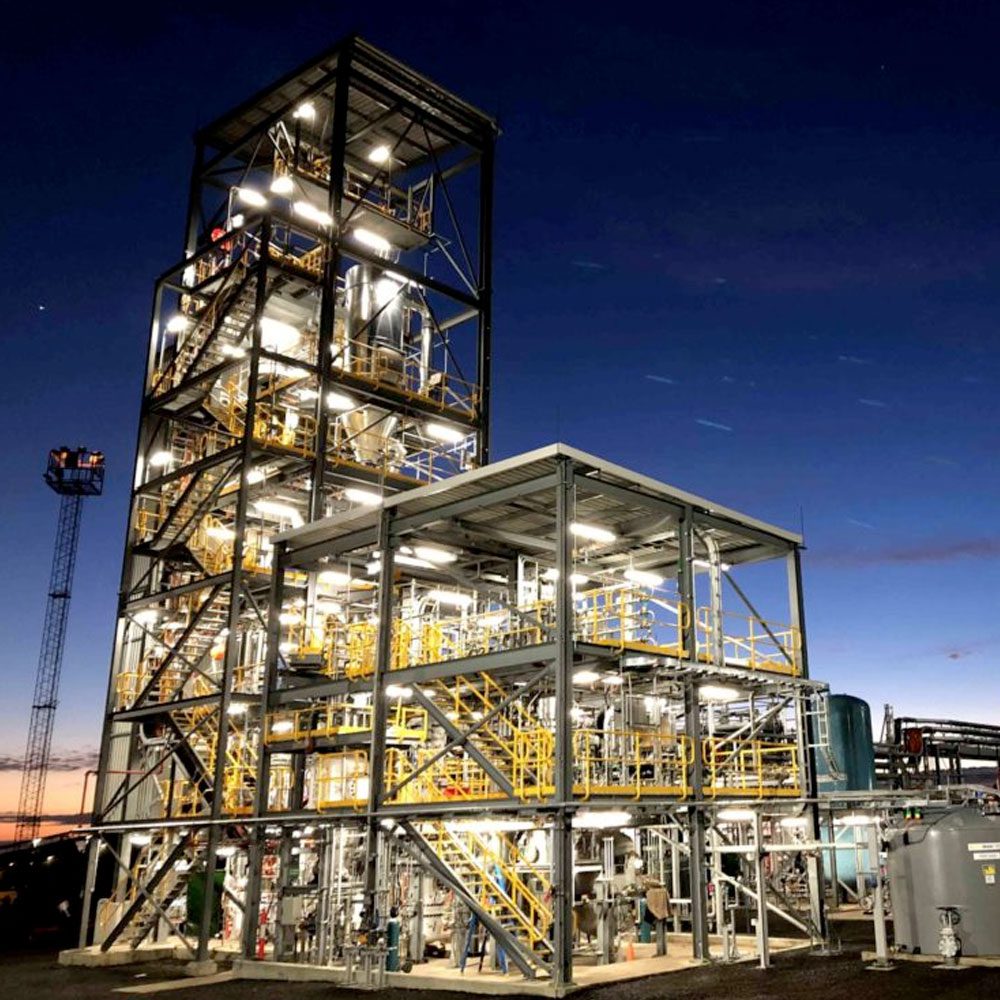
Liquefaction and Loading
Hastings to Port of Kawasaki, Japan
The liquefaction plant will utilise established technology already in use around the world to convert hydrogen gas into liquefied hydrogen (LH2). The liquefaction process will cool the hydrogen gas to −253°C and reduced it to 1/800th of its gaseous volume.
JSE is planning to initially liquefy and ship 30,000 tonnes per annum of clean H2 per year requiring around 3 to 4 trips of the H2 powered marine carrier.
Liquefied hydrogen will be held in an innovative temperature-controlled storage vessel before being loaded onto a hydrogen powered ship for transport to Japan. KHI has developed a specialised system to load the liquefied hydrogen onto the carrier.
KHI has more experience than any other company in the storage and transport of liquefied hydrogen. The company built the storage tanks used to hold hydrogen rocket fuel at the Japan Aerospace Exploration Agency (JAXA) Tanegashima Space Centre. This technology has been in use for more than 30 years.
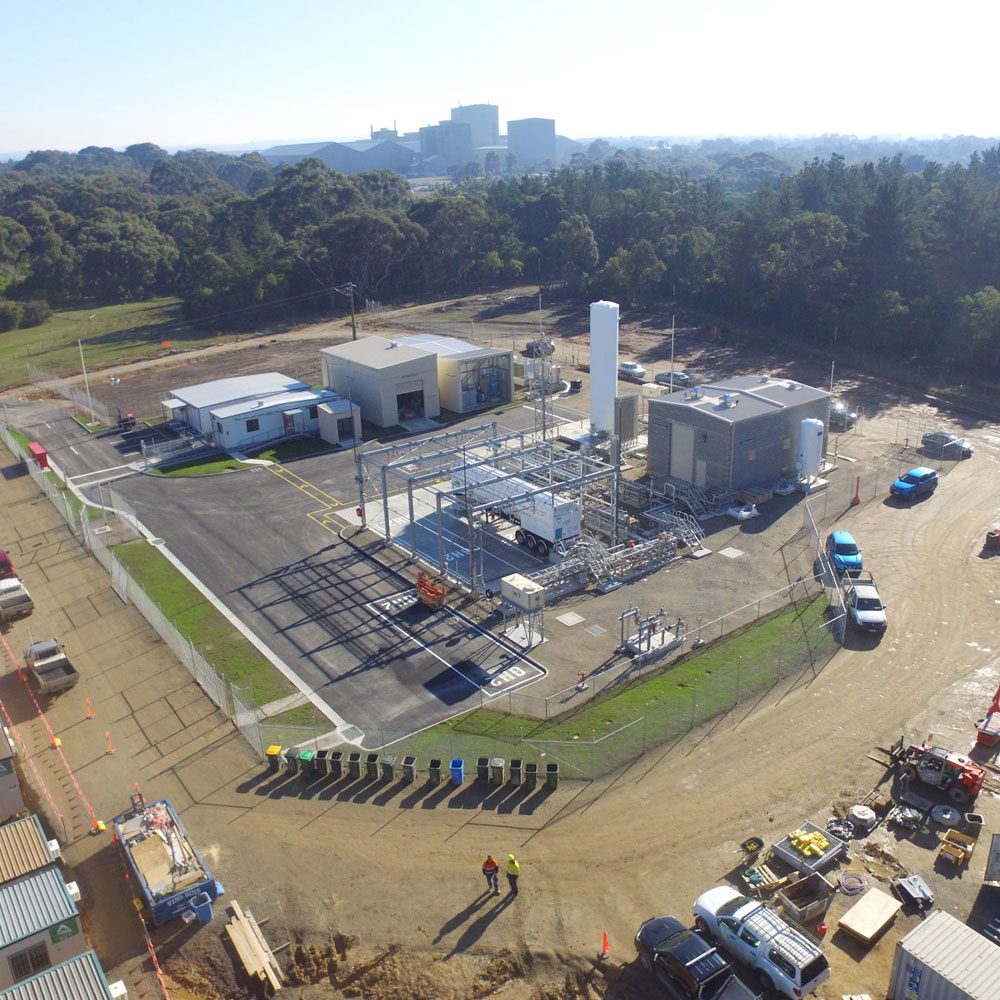
Liquefied Hydrogen Carrier
Hydrogen will be used to propel the innovative new ship between Victoria and Japan, significantly reducing CO2 emissions during operation.
(Concept image of 160,000 ㎥ liquefied hydrogen carrier provided by KHI.)
